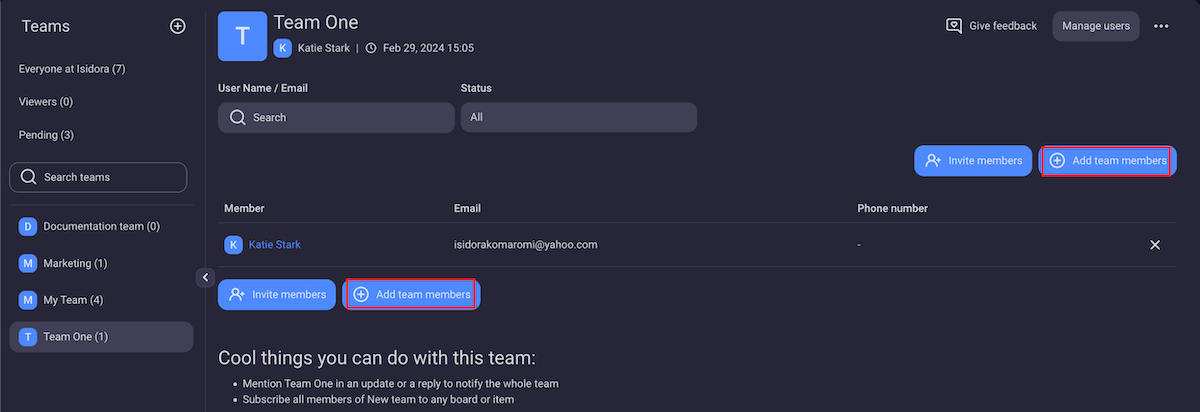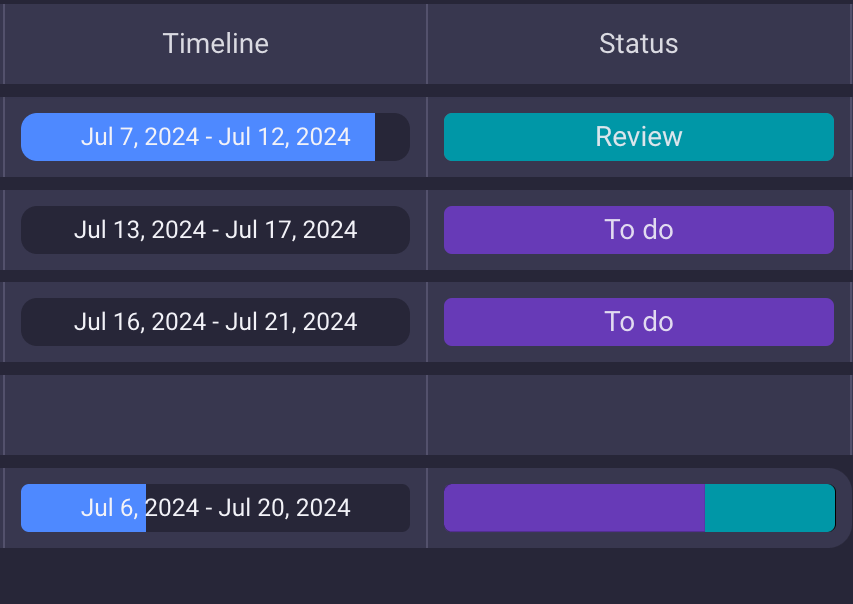Imagine you’re managing a project. But, your team’s productivity has been dropping recently.
You start to notice that some tasks have been done twice. Resources are missing in some departments, but are abundant in others. You struggle to manage workloads, as some teams are overburdened, while others refuse to help out.
Slowly, you realize that the root of all your problems is that your organization is working in silos. No one knows who’s working on what. Worse — you’re not sure how to solve it.
From a young age, we’re taught that “sharing is caring,” but what happens when teams stop doing that? What issues does it lead to, and how do we avoid them?
Let’s dive in.

In this article:
What does it mean to work in silos?
Working in silos means resources are not shared either between individuals in a team, or between teams in an organization.
This can refer to — either purposefully or accidentally — failing to share information, physical resources, or even the team’s capacity and workloads.
The teams or individuals don’t communicate effectively, so they’re unaware of what others are working on. That, in turn, can lead to several problems, like:
- Poor information flow — the flow of information is crucial to a project’s success. But, teams (or team members) that work in silos remain uninformed about others’ activities or important notices. This lack of information sharing can lead to delays, repeated work, bottlenecks, etc.
- Lack of innovation — silos lead to a lack of cooperation and coordination. Innovation is best propelled by teams working closely together — think of brainstorming meetings, for example. But, in silos, people fail to share ideas with each other, which leads to less innovation.
- Duplicated tasks — when team members aren’t aware of what others are working on, they might start working on the same tasks. This results in wasted effort and redundant deliverables.
- Poor resource allocation — as already established, when teams work in silos, they don’t just hoard information — they sometimes hoard resources, too. This leads to inefficient resource use and can result in increased costs and/or delayed timelines.
- Decreased morale — arguably most important of all, silos lead to dissatisfaction in your team. No one likes to work isolated from their organization, so silos will foster resentment, loneliness, and lower productivity.
The experiences of professionals who’ve worked in silos
Let’s focus on what exactly working in silos looks like. For this purpose, we’ve contacted professionals across various industries who’ve experienced this before. They’ll tell us what issues it created, and — more importantly — how to overcome working in silos.
#1 Lack of leadership
Our first example comes from Margaret Ricci, founder and CEO who specializes in building strong resilient teams. Her team was trying to create an integrated app that combined around 4 different areas of the company.
However, she was part of a cross-functional team, without clearly defined leadership.

“No one had assigned a project manager who had overall leadership of the team. We all had good intentions and were actually friends, but so many of us were super-silo-ed that we kept trying to wrest leadership away from everyone else and give it to ourselves. We worked this way for 3 YEARS to get this app over the finish line, but since no one wanted to give power to anyone else, we just kept going around and around in circles!”
Building an app like this is quite demanding on its own, but without the organizational skills of a project manager, it’s no surprise that Margaret’s team had a rough time.
Of course, not every instance of working in silos is purposeful — we’ll see this in other examples, too. But, an overly competitive company culture can lead to this, as is evident in Margaret’s example. This kind of culture leads to poor project collaboration — and with it, silos.

“It was very frustrating. Finally, someone alerted the head of the Project Management department of what was going on, and they stepped in. With that person’s help, we finally finished the project in the next 6–9 months (testing, roll-out, and all). But when I think of all the person-hours, emotions, and wasted efforts in the initial 3 years of that project, I want to cry! And think of all the money the company wasted — all because we wanted that power — the siloing was ingrained in each of us!”
Evidently, team leaders can be a key part of breaking down silos — especially the kind seen in this example. The cross-functional team Margaret was working on stopped withholding information and focused on the task at hand once the leadership shoes were filled and the silos were broken down.
How Plaky can solve a lack of leadership
Using project management software is by itself a large step toward combating silos. Our PM tool — Plaky — ensures project information is clear, and more importantly, accessible to everyone.
But, how could a tool like Plaky help with this specific issue where there’s no clear leader steering the project?

In Margaret’s example, there was a leadership issue, and everyone was isolating themselves as a result.
To solve this problem, Plaky offers you the option to have clear leadership roles established — so when creating items in Plaky for your project, take advantage of its versatility.
For example, you can use several “Person” fields — one can be labeled “Assignee”, establishing task responsibility, and another labeled “Team leader”, signifying clear leadership.
This way, you can eliminate the frustrations of all team members through Plaky.
#2 Lack of accountability
Our next example showcases the issues that silos can create due to a lack of accountability, and it was shared by James Taylor, an SEO consultant with over 7 years of experience in the industry.
He says that silos aren’t just the result of teams simply not knowing what others are working on. Instead, it’s the unwillingness to take responsibility for issues that arise in the project.

“I’ve seen it many times on client projects where the client will give feedback requesting changes. But, because teams are working in isolation rather than as one integrated team, instead of working together to make changes, they will try to pass the work on to another department. Of course, the other department does the same, and it ends up resulting in an ongoing back and forth with each side claiming the work is the responsibility of the other team.”
Operating in silos often leads to a lack of structure within teams and a large division between them. Therefore, it’s easy to avoid task accountability and pass it on to another department.

“With no one willing to add to their workload and take responsibility for finding a solution, it causes delays, wastes time, creates animosity between teams who each feel that the other one isn’t pulling their weight, and ultimately ends up being detrimental to the project.”
The issue James is talking about isn’t uncommon, and it creates a giant scheduling mess. As long as a task is being passed from one team to another, it creates bottlenecks.
How Plaky can solve a lack of accountability
Using a project management tool is the simplest way to boost your team’s accountability.
In Plaky, you can easily use the Assignee field to track who’s responsible for each item.
But what if the items keep getting shuffled through the teams and individuals? What if they use the Assignee field to continue avoiding work, by re-assigning tasks to others?
In that case, your notifications will show any changes to the item you created or are subscribed to. At that point, you can contact the appropriate team members/teams to get to the bottom of the item shuffling.

#3 Lack of collaboration
Our next example shows how silos stunt collaboration across teams. We spoke with Joe Amaral, a Founder and COO with more than 16 years of digital marketing experience. His SEO and content teams worked independently — the SEO team focused on technical fixes, and the content team posted blog posts on various topics.

“After months of work, our client’s rankings hadn’t improved. We then discovered the content lacked keywords the SEO team was targeting. By merging the teams, aligning priorities, and improving communication, we turned things around. But much time and money had been wasted.”
For a project to be successful, you need to observe all teams as one whole — not as separate entities. This is why silos create such an issue — and how Joe realized his teams need to work in sync.

“At my agency, we now emphasize collaboration through weekly meetings, shared KPIs, and an open culture with feedback. Our teams now avoid rework, identify new opportunities, and operate more efficiently. Overall, eliminating silos comes down to communication, shared vision, and valuing different viewpoints. Tearing them down pays high dividends, even if the initial investment seems high.”
So, it’s beneficial to spot silos as soon as possible — just like Joe did. Look for signs like miscommunication, repeated tasks, and information availability.

“An integrated, collaborative approach is the only real way forward.”
How Plaky can solve a lack of collaboration
As seen in Joe’s example, the best way to unify teams is through open communication and a unified vision. Both of these can be implemented with Plaky.
If we look at Joe’s example, in Plaky, both the content and the SEO team could have a shared board, where those teams collaborate on tasks. This clarity with task assignment can be improved with multiple assignee fields — one for the content team, and one for the SEO team.

They can use the File sharing or a Link field to share documents that they’re working on and collaborate efficiently. What’s more, the teams can use item descriptions and comments to communicate any task-relevant info.
Boost team collaboration with Plaky
#4 Lack of decision making
Sometimes, silos don’t just affect your organization — they affect the other organizations you work with, too. One such organization is led by Soumya Mahapatra, a technologist and product leader in the healthcare industry, with over 18 years of experience.
He frequently deals with siloed work — a frustrating experience, as their decision making is done at a glacial pace because of all the red tape.

“While we have a much more open organizational structure, many of our customers in the medical device field use a more siloed approach, separating their research team, regulatory team, manufacturing team, and marketing team. These companies are always a headache to work with because the process of getting a device through the FDA approval process ultimately involves frequent input from all of these players.”
As we can see in this example, one of the biggest issues silos produce is stopping the flow of information — one approval request needs tons of input, and therefore time before it’s returned to Soumya.

“We’ll usually recommend that our customers create dedicated teams for the products they want to get approved in order to cut down on communication issues.”
If there’s an issue with multiple people across different teams needing to work on the same task, that task usually deserves its own team.
How Plaky can solve a lack of decision making
If you want to heed Soumya’s advice and create a separate team for specific tasks — you can use the “Teams” page in Plaky.
Simply hop on the page, add a team — choose a team name and add the team members — and you’re done.

You could create a team without the use of a PM tool — assemble the team in a meeting, maybe sit them together in the office. However, this still leaves room for individual silos — which can lead to even more frustrations.
But, in Plaky, silos quickly become unraveled. This is due to its many task management features, most of which allow for everyone to be clearly notified of the tasks they’re assigned to.
You can add teams as an Assignee to an item, and you can @mention the whole team in relevant comments. With this, you can rest assured that no one is ever left out.
Furthermore, you can use the summary row to track the progress of a task’s status or timeline — and be on the lookout for any signs of silos.

Avoid working in silos with Plaky
Fostering collaboration is a sure way to avoid a silo work environment. And as we’ve mentioned so far, simply using Plaky takes your collaboration to the next level.
With Plaky, teams can keep the information flowing in real time. Anyone can easily see what every other team member is up to. Even with tasks that they aren’t subscribed to, team members can use Plaky’s activity log to check out any changes made to a board.

With access to all project information, your team will finally get to see the bigger picture — and you’ll be sure to stop silos from ever wreaking havoc in your projects.
Avoid the menacing pitfalls of silos by relying on a project management tool. Plaky will encourage a more collaborative atmosphere in your project team — so sign up for a free account today.

